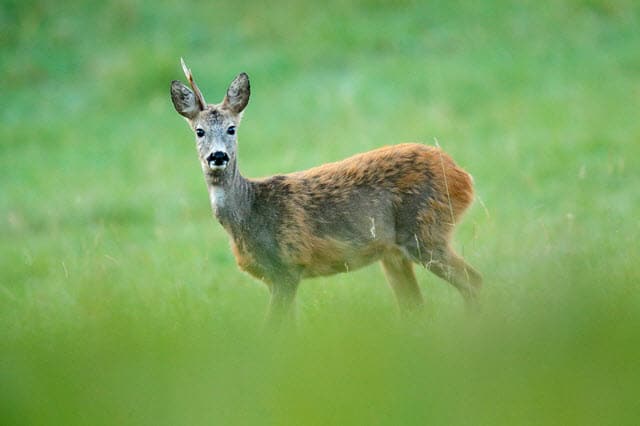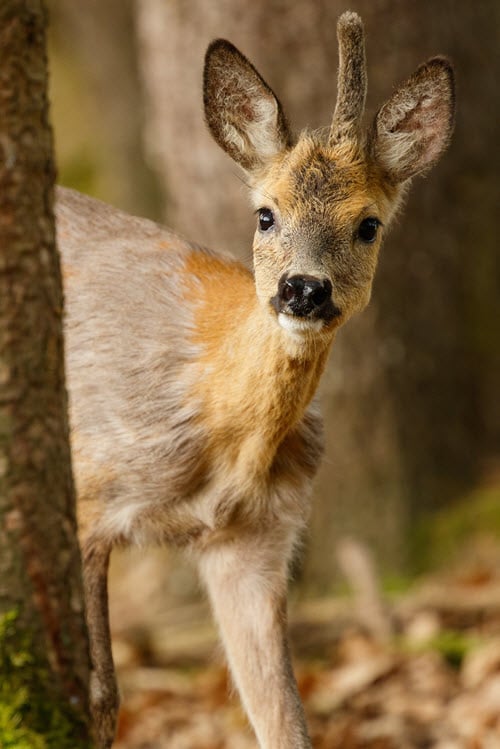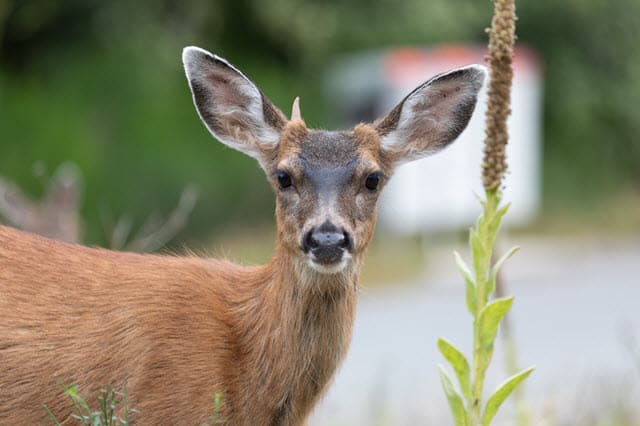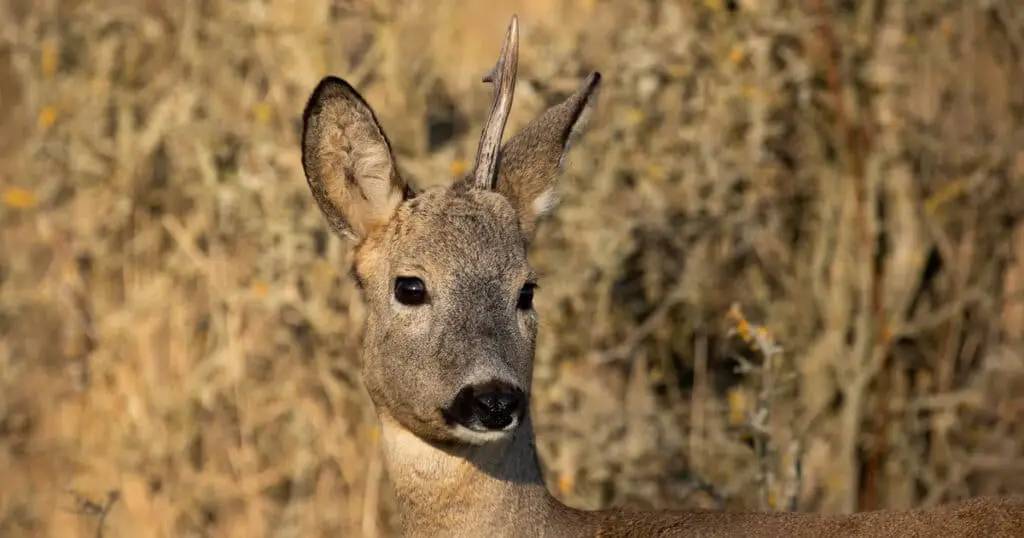Most deer hunters know that looking at the antlers is one of the best ways to discern a deer’s age and other characteristics, such as species. But have you ever seen a buck with just one antler? This may be caused by the animal’s genes or an injury. Let’s learn more about this below.
There are two potential causes of a deer only having one antler. These are:
- Genetic causes
- Injury, especially during developmental stages
Deer antlers grow from the pedicles. When a pedicle is improperly formed, there’s a chance only one antler (instead of two) will grow.
Pedicles are sturdy frontal bones. Their development starts when a male deer hits puberty, usually at about 16 months old.
Pedicles go through several stages of cell and bone development before they’re able to support antlers. Let’s learn more about antler abnormalities here.
About Deer Antler Abnormalities
A buck’s genetic heritage is the most important factor in how its antlers will look. For example, if its father had impressive antlers, it will probably inherit this trait.

But if the father has just one antler as a result of genetics (rather than injury), then a buck may also pass this gene down to this fawn.
The other main cause of antler abnormalities is pedicle injury, as well as injury to the antlers during the velvet stage (during antler growth and before the antler velvet is shed). The velvet stage is when the blood vessels beneath the antlers are working on creating what will eventually be hardened bone.
Antlers in the velvet stage usually appear like fuzzy branches (rather than tough white bone).
Like the antlers themselves, the pedicle is highly vulnerable to damage during its developmental stages. It doesn’t have all the layers it needs to support antlers during that period.
Pedicle sturdiness depends on the other layers of bone and cells they build upon. If one or several of these layers are damaged, the pedicle won’t be sturdy enough.
Injury to the pedicle during its developmental period can cause permanent damage. It may end up unable to support an antler.
What Is A Deer With One Antler Called?
Some hunters refer to a buck with one antler as a “cull buck.” Why? Well, it’s because this kind of buck is usually considered inferior to other bucks.

With only one antler, cull bucks are at an enormous disadvantage when it comes to traditional mating rituals, such as fighting and they may be passed over when it’s time to mate in the herd. Female deer (or “does”) tend to choose their mates based on which bucks can win fights.
Some hunters look for cull bucks, as they’re relatively rare. After all, a taxidermied deer with one antler is an unusual sight.
What Causes Asymmetrical Antlers?
Any buck with two antlers may have asymmetries between them. When there are significant asymmetries, the buck may be considered “non-typical.”
Asymmetrical antlers refer to differences between a buck’s two antlers. Asymmetries may include discrepancies in:
- Size
- Tine lengths
- Curviness or straightness
- Number of points
Asymmetrical antlers are common, but sometimes the differences are barely noticeable.

Pedicle injuries and other injuries to antlers during the velvet stage are the main causes of assymetrical antlers. Severe damage may stop one antler from growing at all, but minor pedicle injuries may just cause the antlers to look a bit different.
Genes can play a role as well, as they do in drop-tine deer antlers.
What Is A Unicorn Deer?
A unicorn deer is extraordinarily rare, much more so than a deer with one antler. The difference? A unicorn deer has its only antler growing out of the center of its head.
A unicorn deer may technically have two antlers rather than one, but they’re fused together into one large spike.
In rare cases, a fawn that receives a skull injury between the pedicles may be prone to becoming a unicorn deer. This would happen if the pedicles fuse together during healing, resulting in a unicorn-like single antler in the middle of its head.
Final Thoughts: Deer With One Antler
Deer antler abnormalities and severe asymmetry are quite rare. If you ever come across a buck with just one antler, it’s either because of:
- Genetic heritage
- Injury (especially to the pedicle during developmental stages)
Most one-antlered deer have their sole antler on one side of the head, where a traditional antler would grow. They’re simply missing the second antler.
A much rarer sight is the “unicorn deer.” This deer has one antler (or what appears to be one antler) growing from the center of its head, making its appearance resemble that of a unicorn. This can result from fused pedicles, which may be caused by injury.


